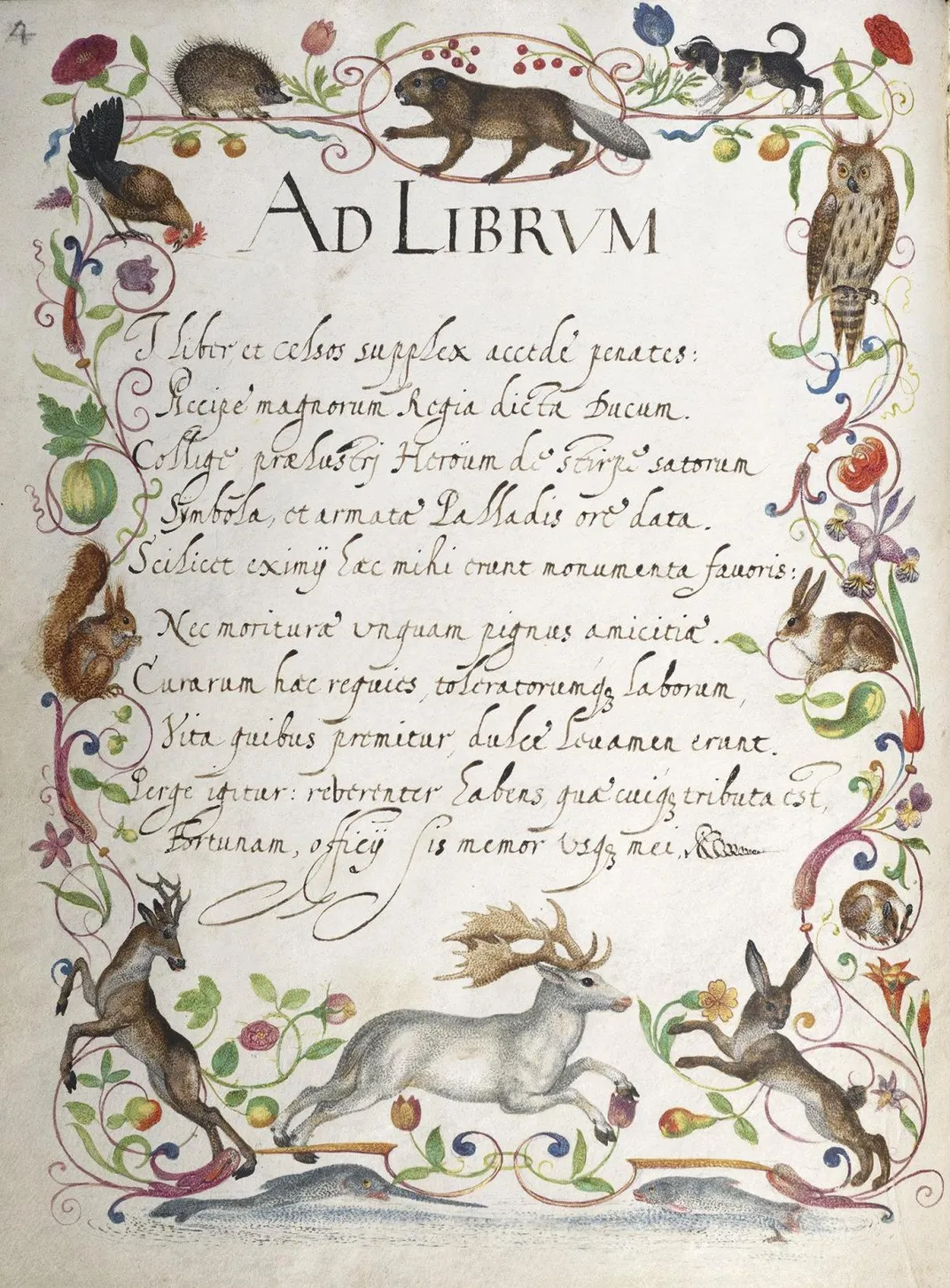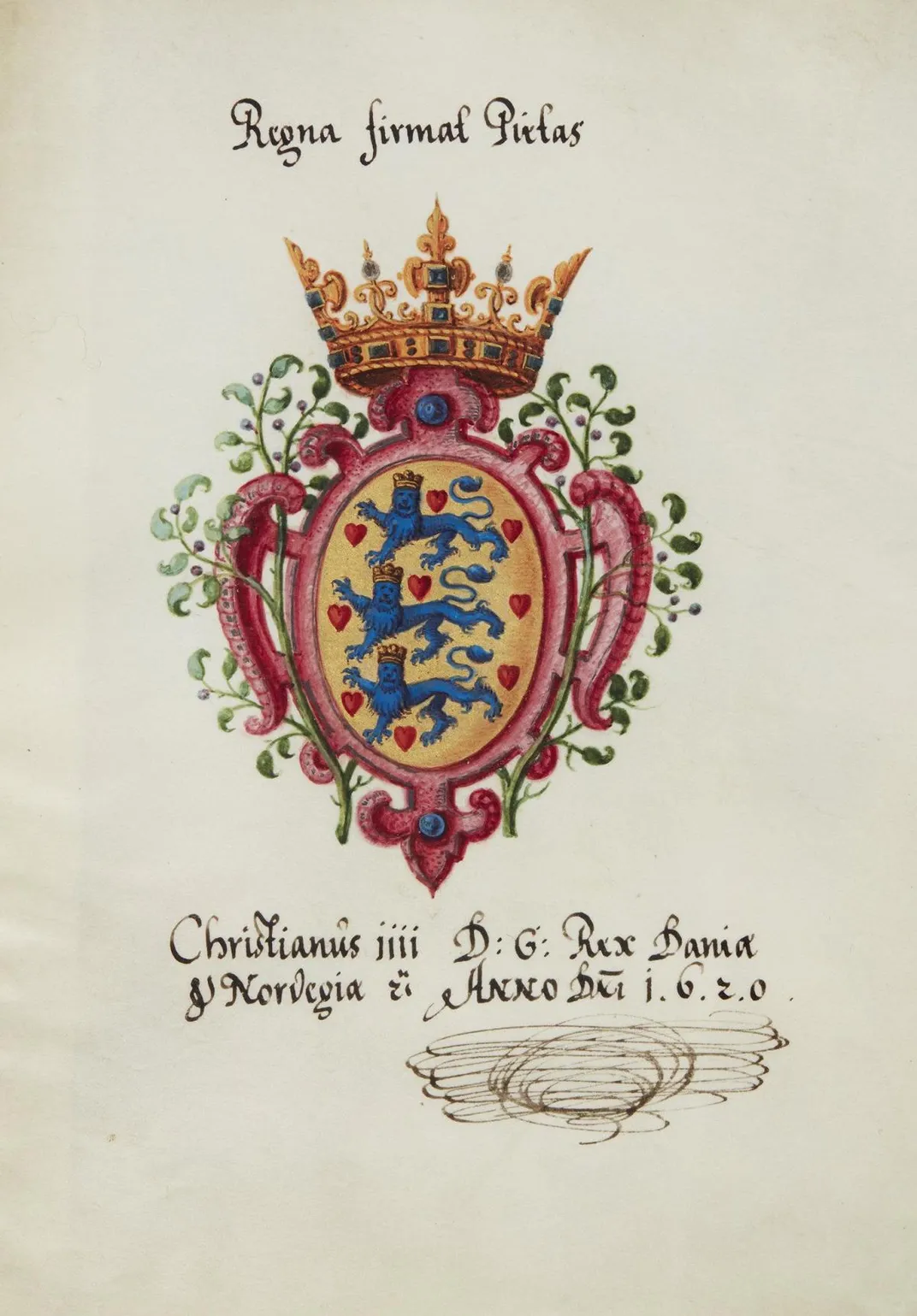Why ‘Friendship Books’ Were the 17th-Century Version of Facebook
Dozens of 17th-century dignitaries signed a 227-page manuscript recently acquired by a German library
:focal(784x624:785x625)/https://tf-cmsv2-smithsonianmag-media.s3.amazonaws.com/filer/6a/01/6a011e50-f854-4ac2-be08-d107decb8afc/friendship_book.jpg)
Nearly four centuries after its founder first attempted to purchase a “friendship book” filled with European luminaries’ signatures, Germany’s Herzog August Bibliothek (HAB)—one of the oldest libraries in the world—has finally acquired the much-longed for text, reports Alison Flood for the Guardian.
Beginning in 1596, Augsburg art dealer and diplomat Philipp Hainhofer traveled to various courts north of the Alps, trading luxury goods and political insights. As he journeyed, Hainhofer gathered clout by building an impressive collection of autographs in his Große Stammbuch, or friendship book.
Dignitaries including Grand Duke of Tuscany Cosimo I de’ Medici, Holy Roman Emperor Rudolf II and Christian IV of Denmark personally added their names to Hainhofer’s album. When the art dealer died in 1647, his 227-page collection contained the signatures of dozens of princes, kings, generals and diplomats, as well as around 100 vibrant illustrations.
The year after Hainhofer’s death, Augustus the Younger, a duke of the House of Welf, tried to purchase the Stammbuch for his growing collection of old books and manuscripts. But his bid was unsuccessful, and the book was subsequently sold privately. Augustus’ collection, meanwhile, became the basis of the Herzog August Bibliothek following his death in 1666.
The Stammbuch was feared lost until it resurfaced at a London auction in 1931. More recently, in 2006, Christie’s sold the manuscript for $2.3 million (approximately $3 million today). Last year, a private seller offered the book to Sotheby’s, which, in turn, sold it to the German library for about $3.3 million dollars.
“The acquisition of the Hainhofer Stammbuch is a sensation and a stroke of luck for the preservation of cultural heritage in Germany,” says Björn Thümler, Lower Saxony’s minister for science and culture, in a statement. “All those involved have put all their efforts into bringing the art-historical and cultural-historical masterpiece to the HAB in Wolfenbüttel.”
During the 17th century, Hainhofer used the Stammbuch to prove his close connections to members of court around Europe. This helped him gain access to the continent’s “leading decision-makers,” per the Art Newspaper’s Catherine Hickley.
Hainhofer created a total of four friendship books. Two were already housed in the library’s collection, but the newly acquired manuscript easily eclipses them. In total, an estimated 25,000 friendship books are known to survive today.
“Books of this kind grew out of university culture in Germany in the sixteenth century, but by the seventeenth century had become a form of social networking used by people of all professions and stages in life—the seventeenth-century Facebook,” wrote Lynley Anne Herbert, assistant curator of rare books and manuscripts at the Walters Art Museum in Baltimore, for the Public Domain Review in 2014. “… Through these inscriptions, they built relationships, documented their worldliness, and created an image of who they were through the people they had gathered.”
Thanks to its rich illustrations and array of famous names, Hainhofer’s Große Stammbuch is one of the most impressive examples of the genre. It also contains Latin poetry and spreads of botanical illustrations.
According to the statement, the library has launched a three-year research project aimed at better understanding the book’s origins, history and artistic design.
“With this acquisition, the Stammbuch will be comprehensively and without restrictions accessible to research for the first time,” says director Peter Burschel in the statement. “Exhibitions, which will make the Stammbuch accessible to a broader public, are already being planned.”
He adds, “This acquisition makes me very happy—and I would like to thank all those who have contributed to it.”


/https://tf-cmsv2-smithsonianmag-media.s3.amazonaws.com/filer/6d/45/6d45c1fb-52ee-4674-904e-f4c5976bcde3/friendshipbook2.jpg)
/https://tf-cmsv2-smithsonianmag-media.s3.amazonaws.com/filer/e6/12/e6124ac8-5e1f-4247-ac4f-204b5f13e2c9/friendshipbook1.jpg)